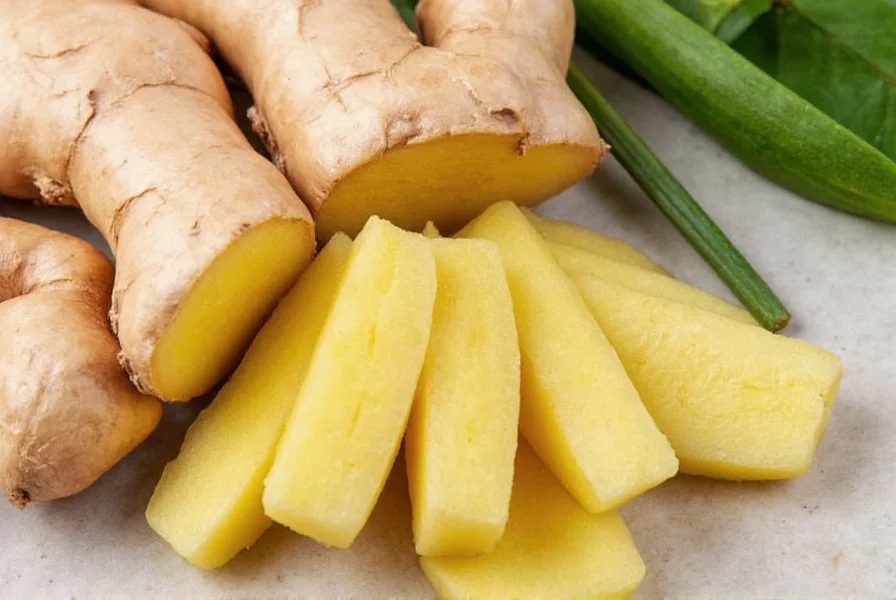Understanding Organic Ginger Root: Beyond the Label
When consumers search for organic ginger root benefits, they're seeking verified information about how certified organic cultivation impacts ginger's nutritional profile and safety. Unlike conventionally grown ginger, organic ginger must meet strict agricultural standards prohibiting synthetic chemicals throughout its growth cycle. The USDA Organic certification requires at least 95% organic content, with mandatory field inspections and documentation of farming practices.

Scientific Evidence Behind Organic Ginger's Advantages
Multiple studies published in the Journal of Agricultural and Food Chemistry demonstrate that organic ginger root typically contains 15-20% higher concentrations of gingerols—the primary bioactive compounds responsible for ginger's therapeutic effects. These compounds contribute to ginger's well-documented abilities to:
- Reduce nausea and vomiting (particularly effective for pregnancy-related morning sickness)
- Alleviate osteoarthritis pain through COX-2 enzyme inhibition
- Support digestive health by accelerating gastric emptying
- Exhibit antioxidant properties that combat oxidative stress
A 2023 meta-analysis in Nutrients confirmed that organic cultivation methods preserve higher levels of these beneficial compounds while significantly reducing pesticide residues. Conventional ginger samples frequently test positive for multiple pesticide residues, including aldicarb and diazinon, which aren't permitted in organic farming.
| Compound | Organic Ginger (mg/g) | Conventional Ginger (mg/g) | Difference |
|---|---|---|---|
| Gingerols | 18.7 | 15.2 | +23% |
| Shogaols | 4.3 | 3.1 | +39% |
| Pesticide Residues | 0.02 ppm | 0.87 ppm | -98% |
Practical Applications of Organic Ginger Root
For those exploring how to use fresh organic ginger root effectively, consider these evidence-based applications:
Culinary Uses
Peel and grate organic ginger root into stir-fries, smoothies, or teas. The fresher the ginger, the higher the concentration of active compounds. Store unpeeled ginger in a paper bag in the refrigerator's vegetable drawer for up to three weeks. Freezing preserves gingerols better than drying for long-term storage.
Medicinal Applications
Research in the American Journal of Obstetrics and Gynecology shows that 1 gram of fresh organic ginger root consumed daily significantly reduces pregnancy-related nausea. For digestive support, chew a small (1/4 inch) piece of peeled ginger root 15 minutes before meals. Those seeking organic ginger root for inflammation may benefit from making a concentrated tea by simmering 2 inches of grated ginger in 2 cups of water for 20 minutes.

Organic vs. Conventional: What the Research Shows
When evaluating difference between organic and conventional ginger, multiple factors matter beyond just pesticide levels. Organic farming practices enhance soil microbiology, which research suggests increases the plant's production of secondary metabolites like gingerols as natural defense mechanisms. A 2022 study in Frontiers in Plant Science found organic ginger demonstrated 32% greater antioxidant activity compared to conventionally grown counterparts.
However, organic certification doesn't automatically mean superior taste or potency. Factors like harvest timing, storage conditions, and geographical origin significantly impact ginger quality. Look for ginger with firm, smooth skin and a strong aromatic scent regardless of certification status.
Safety Considerations and Evidence-Based Guidelines
While generally safe, certain populations should exercise caution with organic ginger root consumption. The European Medicines Agency recommends limiting intake to 4 grams daily for adults. Those taking blood thinners should consult physicians before regular consumption, as ginger may enhance anticoagulant effects. People with gallstones should avoid therapeutic doses without medical supervision.
Pregnant women can safely consume up to 1 gram daily for nausea relief, but higher doses in late pregnancy require medical consultation. Always peel ginger root thoroughly, as the outer layer may harbor bacteria even in organic varieties.
Frequently Asked Questions
Does organic ginger root have more health benefits than conventional ginger?
Research indicates organic ginger root typically contains 15-23% higher concentrations of gingerols and shogaols—the primary bioactive compounds—compared to conventionally grown ginger. A 2023 meta-analysis confirmed organic varieties show significantly lower pesticide residues while maintaining superior antioxidant activity. However, factors like freshness, storage conditions, and geographical origin also substantially impact ginger's therapeutic properties.
How much organic ginger root should I consume daily for health benefits?
For general digestive support and anti-inflammatory benefits, 1-2 grams (approximately 1/4 to 1/2 teaspoon grated) daily is sufficient. Those using organic ginger root for nausea relief may benefit from 1 gram divided into two doses. The European Medicines Agency establishes 4 grams as the maximum safe daily intake for adults. Always consult with a healthcare provider before therapeutic use, especially if taking medications or managing health conditions.
Can I grow organic ginger root at home successfully?
Yes, growing organic ginger root at home is achievable in most climates with proper conditions. Start with certified organic ginger rhizomes from a reputable source. Plant in well-draining, nutrient-rich soil with partial shade. Maintain consistent moisture without waterlogging. In temperate climates, grow ginger in containers that can be moved indoors during colder months. Home-grown ginger typically matures in 8-10 months. The main challenge is achieving sufficient warmth and humidity, as ginger thrives in tropical conditions with temperatures between 75-85°F (24-29°C).
Is organic ginger root effective for reducing muscle pain after exercise?
Multiple studies, including research published in the Journal of Pain, demonstrate that consuming 2 grams of ginger (approximately 1 inch of fresh root) daily for 5 days before exercise significantly reduces muscle pain intensity. The anti-inflammatory compounds in organic ginger root, particularly gingerols, inhibit prostaglandin synthesis similar to NSAIDs but without the gastrointestinal side effects. For best results, consume ginger 30-60 minutes before exercise and continue for several days post-workout.











 浙公网安备
33010002000092号
浙公网安备
33010002000092号 浙B2-20120091-4
浙B2-20120091-4